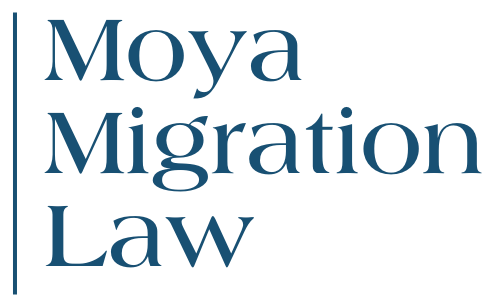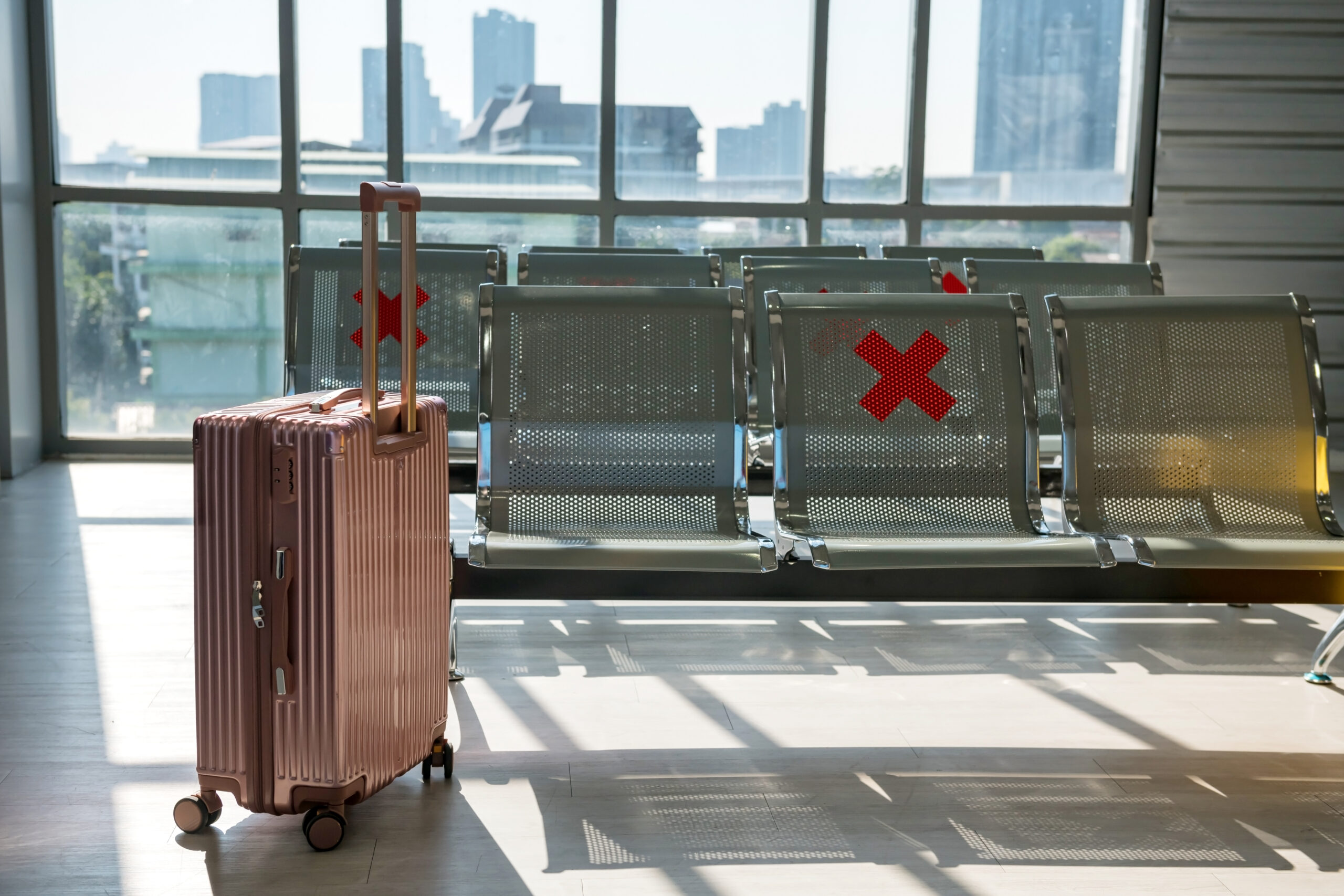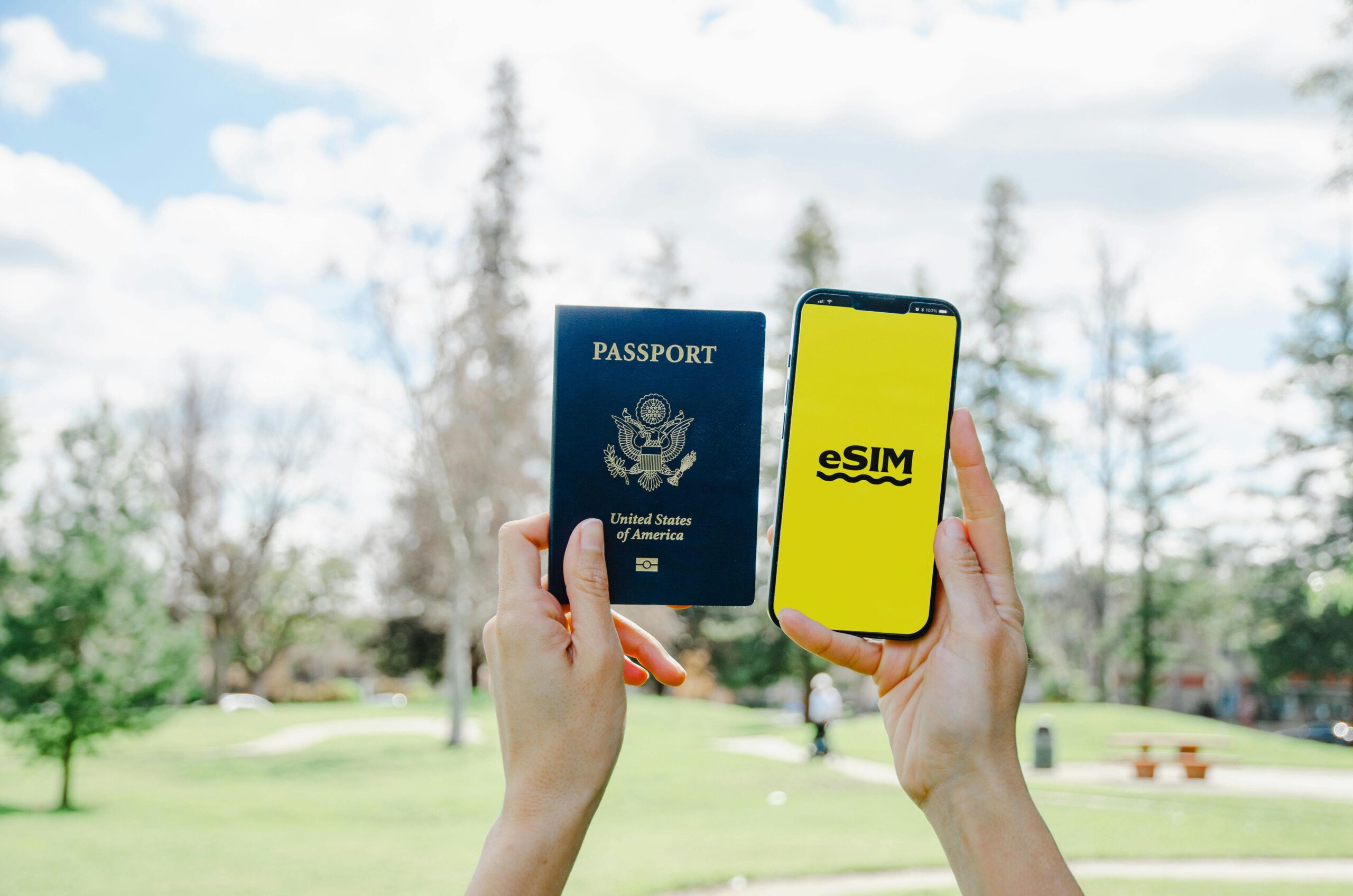Introduction
Receiving an Australian visa refusal can be a deeply unsettling experience, often disrupting significant life plans for work, study, or family reunification in Australia. However, a visa decision from the Department of Home Affairs (DOHA) that results in a visa refusal is not necessarily the end of the road, as you may be able to apply for a review.
This step-by-step guide is designed to help you understand the process if your Australian visa application has been refused, and you wish to lodge an appeal. It will explain how to navigate the appeal process with the Administrative Review Tribunal (ART), the body responsible for conducting a merits review of visa decisions made by DOHA, typically under the Migration Act 1958 (Cth).
What Should You Know About Your Australian Visa Refusal and Right to Appeal at the ART?
Review Your Australian Visa Refusal Letter in Detail
When your Australian visa application is refused, the first and most critical step is to thoroughly review the refusal letter provided by DOHA. This document serves as a roadmap for any potential appeal you might consider.
The refusal letter contains vital information that:
- Articulates the specific reasons for your visa refusal
- References the particular legislative provisions under which the decision was made
- Explains why the decision-maker found that you did not meet the necessary criteria
Beyond notification, the letter provides crucial details regarding your appeal rights, including:
- Whether the visa decision is reviewable
- Which body is responsible for conducting the review (typically the ART)
- The strict time limit within which you must lodge an application for review
- Your Decision Record Number (DRN), which you will need for any review application
A careful and complete understanding of this letter is foundational, as the reasons for refusal detailed within it will shape your entire appeal strategy. It is important to note that while the letter provides crucial guidance, there have been instances where information regarding review rights in decision letters was not entirely accurate, so careful assessment is always recommended.
Identify Reasons Why DOHA Might Refuse an Australian Visa Application
There are numerous reasons why DOHA might refuse an Australian visa application. Understanding these common pitfalls can help you identify potential issues in your case.
Some frequent grounds for visa refusal include:
- Failure to meet eligibility criteria: Each visa subclass has specific requirements related to age, skills, qualifications, English language ability, health, or character. For instance, partner visa applications often face scrutiny regarding the genuineness of the relationship, while student or visitor visas may be refused if Genuine Student (GS) requirements are not met.
- Insufficient or incorrect documentation: Applications can be rejected whether essential documents are missing, incomplete, or not provided in the required format. The information supplied might also be deemed inadequate for the decision-maker to be satisfied that all criteria are met.
- Authenticity concerns: Providing false or misleading information, or submitting documents that are found to be non-genuine (bogus), can lead to a visa refusal. This can occur even if the error was unintentional.
- Financial incapacity: Many visa types require applicants to demonstrate that they have sufficient funds to support themselves (and any accompanying family members) during their stay in Australia.
- Health or character issues: Not meeting Australia’s health or character requirements, as defined in the migration legislation, is a common reason for refusal.
- Incorrect visa application: Applying for a visa subclass that is not appropriate for your circumstances or intentions can result in a refusal.
- Changes in circumstances: If your situation changes significantly between lodging your application and the time a decision is made, you might no longer meet the visa criteria.
- Previous immigration history: Breaching conditions of a previous Australian visa or having an adverse immigration history can negatively impact a new visa application.
The complexity of migration law, which is also subject to frequent changes, means that misinterpreting legislative provisions or failing to address all requirements thoroughly can easily lead to a visa refusal.
Determine Your Eligibility to Lodge an ART Appeal
If your Australian visa application is refused, it’s important to determine if you have the right to appeal the decision to the ART. Not all visa refusal decisions are reviewable. Your refusal letter is the primary document that should state whether you have review rights and who is entitled to apply for a review.
Key factors influencing your eligibility to lodge an appeal include:
- Who can apply:
- Visa applicant: In most instances, the person whose visa application was refused is the one entitled to apply for a review.
- Sponsors or nominators: For certain visa types that require an Australian sponsor or nominator (e.g., some partner visas or employer-sponsored visas), the sponsor or nominator may have the right to apply for a review of the visa refusal. They can also seek review of a decision to refuse their sponsorship or nomination application.
- Location of visa application:
- Onshore applications: If you applied for the visa while in Australia, the refusal decision is generally reviewable by the ART.
- Offshore applications: If you applied for the visa while outside Australia, you often are not entitled to a review if you applied independently (without an Australian sponsor). However, if your offshore application was sponsored by an Australian relative or employer, review rights may exist.
- Type of decision: The ART can review a wide range of decisions made by DOHA under the Migration Act1958 (Cth), including:
- Decisions to refuse most types of visas (e.g., visitor, student, partner, skilled, protection visas)
- Decisions to cancel an existing visa
- Decisions related to character grounds, such as a refusal or cancellation under section 501 of the Migration Act 1958 (Cth)
- Decisions to refuse sponsorship or nomination applications
- Decisions generally not reviewable by the ART:
- Decisions made personally by the Minister for Home Affairs or the Minister for Immigration
- Decisions where the Migration Act 1958 (Cth) or other legislation explicitly states that there is no right to review
- Direct review of mandatory visa cancellations under section 501(3A) of the Migration Act 1958 (Cth) (often related to serious criminality)
Part 5 of the Migration Act 1958 (Cth) generally outlines which decisions are reviewable. It is crucial to confirm your specific review rights as outlined in your refusal letter or by seeking professional advice.
Request Your Free 15-Min Consultation
How Should You Prepare Your ART Appeal After a Visa Refusal?
Observe Time Limits When Lodging Your Australian Visa Refusal Appeal
Adhering to strict time limits is absolutely critical when you decide to apply for a review of your Australian visa refusal with the ART. These deadlines are rigidly enforced, and the ART generally has no power to extend them. Missing the deadline usually means you will lose your right to appeal the visa decision, regardless of the merits of your case.
The specific timeframe to lodge your appeal application varies depending on the type of visa and the circumstances of the refusal. Your visa refusal letter from DOHA will clearly state the exact time limit that applies to your situation. It is essential to check this document carefully.
Generally, time limits can include:
- Most visa refusals (applicant not in detention): Often 21 to 28 days from the date you are notified of the decision.
- Applicants in immigration detention: Significantly shorter deadlines, potentially as little as 7 days from notification for migration or protection decisions.
- Character-related refusals: These can also have shorter timeframes, sometimes 9 days if you are in Australia.
Always refer to your decision letter for the precise deadline, as failing to lodge your appeal within the specified time will prevent the ART from considering your case.
Gather Documents & Evidence for Your Visa Refusal Appeal
Thorough preparation of documents and evidence is crucial when you apply for a review of a visa refusal by the ART. Your goal is to provide a comprehensive case that directly addresses the reasons why your visa application was initially refused by DOHA.
When gathering your documentation, you should focus on:
- The Refusal Decision Letter: A copy of this letter is essential for your appeal application.
- Original Visa Application Documents: Include all documents submitted with your initial visa application.
- New and Supporting Evidence: The ART can consider new information that was not before DOHA. This is your opportunity to provide additional documents that address the specific reasons for the visa refusal.
This new evidence might include:
- Corrected or updated forms and personal information
- Recent financial statements to demonstrate sufficient funds
- Updated medical reports or character references if these were areas of concern
- Detailed personal statements explaining your circumstances and why you believe the refusal was incorrect
- Evidence of changes in circumstances that are relevant to your eligibility
- Statutory declarations or witness statements that support your claims
It is important to present clear, updated, and comprehensive evidence. You can usually upload documents through the ART’s online portal when you lodge your appeal, or submit them later as your case progresses and before any hearing. The ART may also request specific information or documents from you.
Understand Costs & Potential Fee Reductions for an ART Appeal
Lodging an appeal with the ART for a visa refusal typically involves an application fee. Understanding these costs and any potential reductions or refunds is an important part of preparing your appeal.
The standard application fee for most migration decision reviews, including general visa refusals and character-related decisions, is currently $3,496. This fee generally needs to be paid when you lodge your application or before the deadline for lodging expires. However, there are some variations and considerations.
Fee variations by visa type:
- Protection Visas: There is no upfront application fee to apply for a review of a protection visa refusal. However, a fee (currently $2,151) may be payable later if your review is unsuccessful, and you are not found to be in severe financial hardship.
- Bridging Visas leading to detention: No application fee is payable for reviews of certain bridging visa decisions that resulted in a person being placed in immigration detention.
Options for fee reduction and refunds:
- Fee Reduction for Financial Hardship: If paying the full standard fee would cause you severe financial hardship, you may apply for a 50% reduction. This would lower the $3,496 fee to $1,748. A specific form and supporting evidence of financial hardship must be submitted to the ART before your application deadline.
- Fee Refunds: The application fee may be refunded in certain situations:
- A full refund is typically provided if the ART determines your review application is invalid (e.g., lodged out of time).
- If your appeal is successful and the ART sets aside or remits DOHA’s decision, you will generally receive a refund of 50% of the fee you paid.
- If you paid the full fee, but the ART later decides you were eligible for a reduced fee, the difference will be refunded.
It is advisable to check the current fee schedule on the ART website, as fees can change.
Request Your Free 15-Min Consultation
How Should You Lodge a Visa Refusal Appeal with the Administrative Review Tribunal?
Submit Your Visa Refusal Appeal Application to the ART
When your Australian visa application has been refused, and you’re eligible for a review, you can lodge an appeal with the ART. The ART offers several methods for submitting your appeal application:
- Online services portal — The strongly recommended option that allows you to:
- Create an account
- Lodge your appeal
- Upload supporting documents
- Track your case progress (Requires a valid email address and specific information about your visa decision)
- Paper application forms — Available for download from the ART website if you cannot use the online portal. These completed forms can be submitted:
- By email to reviews@art.gov.au
- By post to an ART registry
- In person at an ART registry office
Different forms are available for specific situations, such as Form M1 for migration decisions for individuals not in immigration detention, and Form M2 for those in immigration detention.
It is crucial to submit your appeal application within the strict time limits specified in your visa refusal letter. You will also need to pay the relevant application fee, unless you qualify for a fee waiver or are applying for a review of a protection visa decision, which has different fee arrangements.
When lodging your appeal, you must provide a copy of the decision letter from DOHA, if available. If not, certain mandatory information is required, including:
- Your full name and contact details
- Date of the decision (if known)
- A description of the decision
- Identifying details such as your date of birth and passport number
Await Next Steps After Lodging Your Australian Visa Appeal
Once you have successfully lodged your appeal application with the ART and paid any applicable fee, the ART will typically send an acknowledgement confirming receipt of your application. This initial correspondence may also state that the validity of your appeal has not yet been assessed.
If your appeal is valid, you generally will not receive further confirmation of its validity; you can assume it is in the queue unless the ART contacts you about any issues.
Following lodgement, DOHA will be requested to provide the ART with all documents related to your original visa application and the refusal decision. These documents, often referred to as “T-files” or “Section 37 documents,” will usually be shared with you or your representative. It is important to review these documents carefully.
Generally, after lodging a valid appeal, there will be a waiting period before the ART contacts you again. The next significant communication is often when a Tribunal Member has been allocated to your case and a hearing date is set. This correspondence will typically:
- Invite you to submit any further documents or information for the Tribunal Member’s consideration
- Possibly specify particular information the Member requires
The ART will then proceed to review your case, which may involve a hearing where you can present your arguments and evidence.
Request Your Free 15-Min Consultation
How Does the ART Hearing Process Unfold for Your Visa Refusal?
Organise & Prepare Your Case for Your ART Hearing
Thorough preparation is essential when you apply for a review of your visa refusal and are scheduled for a hearing with the ART. Effective preparation can significantly influence your ability to present a persuasive case.
Your preparation should involve several key steps:
- Understand the Refusal: You must have a clear and detailed understanding of the specific reasons why DOHA refused your visa application. Your entire appeal strategy will revolve around addressing these points.
- Gather and Organise Evidence: Collect all documents and information that support your case and directly counter the reasons for the visa refusal. This includes:
- Any corrected or additional documents that were missing or incomplete in your initial visa application
- Updated financial statements to demonstrate sufficient funds, if this was an issue
- Recent medical reports or character references if these areas were grounds for refusal
- A detailed personal statement explaining your circumstances and why you believe the visa decision was incorrect
- Evidence of any changes in your circumstances that are relevant to your eligibility
- Statutory declarations or witness statements that corroborate your claims
- Expert opinions, if applicable to your situation
- Prepare Written Submissions: For many cases, especially those involving complex legal arguments or a significant amount of evidence, preparing detailed written submissions is highly recommended. These submissions should articulate your arguments, refer to the supporting evidence, and explain how you meet the relevant legislative criteria for the visa. An immigration lawyer or registered migration agent (RMA) can be invaluable in drafting these.
- Plan Your Presentation: Think carefully about what you will say during the hearing. Outline the key points you need to cover to explain your circumstances, why DOHA’s decision was incorrect, and how you satisfy the visa requirements. Practicing your statement and anticipating potential questions can help you present with clarity and confidence.
- Prepare Witnesses: If you intend to have witnesses provide evidence, they must be thoroughly briefed on the hearing process and the types of questions they might be asked. Their testimony should be directly relevant to the issues in dispute. You must notify the ART in advance if you wish to have witnesses present.
- Documents for the Hearing: Ensure you have the hearing invitation letter from the ART, photographic identification, and copies of any additional documents you wish to provide that have not already been submitted.
Engaging an experienced legal professional, such as an immigration lawyer or an RMA, can be very beneficial in preparing for your ART hearing. They can assist in assessing your prospects, gathering and preparing crucial evidence like statutory declarations and expert opinions, and formulating compelling grounds of appeal to address the visa refusal.
Prepare for Your ART Hearing When Your Visa Is Refused
Once your appeal is lodged with the ART, and if a decision cannot be made based on the documents alone, you will likely be invited to a hearing. Understanding what to expect during this critical stage of the appeal process can help alleviate anxiety and enable you to present your case more effectively after your visa has been refused.
Here’s a general overview of the hearing process:
- Notification and Scheduling: The ART will send you an invitation letter stating the date, time, and location or mode of your hearing (e.g., in-person, telephone, or video conference). This invitation will also specify a deadline for responding and for submitting any further documents.
- The duration of an ART hearing can vary depending on the complexity of your case; many last between one and three hours, but some may be shorter or require more extended sessions. The invitation letter will usually provide an estimate.
- Conduct of the Hearing: ART hearings are generally conducted in a manner that is less formal than court proceedings. The aim is to be accessible and allow you a fair opportunity to present your case.
- Modes of Hearing: Hearings can be conducted in person at an ART registry, by telephone, or by video conference, depending on the circumstances.
- Attendees: The following individuals are typically present:
- The ART Member (or Members) who will listen to your evidence, ask questions, and ultimately make the decision on your visa refusal appeal
- An ART hearing attendant, who assists with administrative and procedural matters
- An interpreter, if you have requested one and the ART has arranged for their presence (at no cost to you)
- Your legal representative (immigration lawyer or RMA), if you have appointed one
- Witnesses, if you have arranged for them to provide evidence and have notified the ART in advance
- A support person (such as a friend or family member), provided you have notified the ART and their presence is approved
- The Hearing Procedure:
- If the hearing is in person, you should arrive at least 15 minutes early and confirm your identity with photo ID
- You may be asked to take an oath or make an affirmation to tell the truth
- The ART Member will typically begin by clarifying the ART’s role, the purpose of the interpreter (if present), and outlining the key legal and factual issues the Tribunal needs to consider for your visa decision
- You or your representative will then have the opportunity to present your case. This may involve making an oral statement, referring to submitted documents, presenting new evidence (if permitted and relevant), and calling witnesses
- The ART Member will likely ask you questions throughout the hearing. This is part of the ART’s inquisitorial role, where the Member actively seeks information to understand your circumstances and claims fully
- It is important to answer all questions honestly, clearly, and consistently. Maintain a calm and respectful demeanour throughout the proceedings
- Evidence: The ART is not bound by the strict rules of evidence that apply in courts, allowing for a more flexible approach to the information it considers.
- Post-Hearing: The ART Member may ask you to provide additional information or documents after the hearing if they believe it is necessary to decide. In some instances, further hearings may be scheduled.
After the hearing is finalised, the ART will generally send you a written statement advising of the Tribunal Member’s decision on your visa refusal appeal, though this can take weeks or months.
Arrange Representation & Support for Your ART Hearing
When facing an ART hearing for your visa refusal, you have options regarding representation and can also access support services to help you navigate the process.
- Self-Representation: You are entitled to represent yourself at the ART hearing. If you choose this path, you will be responsible for preparing your case, presenting your evidence, and responding to questions from the Tribunal Member.
- Appointing a Representative: Many applicants choose to appoint a representative to assist them. Permitted representatives include:
- A Registered Migration Agent: RMAs are qualified to provide immigration assistance, which includes preparing your appeal, lodging documents, and representing you at the ART hearing.
- An Australian Immigration Lawyer: Immigration lawyers can perform all the functions of an RMA. Additionally, they can provide comprehensive legal advice on complex points of law, draft sophisticated legal submissions, and, importantly, represent you in court if your case proceeds to judicial review after the ART decision.
- A Close Family Member: In some circumstances, a close family member, such as a spouse, child, parent, or sibling, may be permitted to represent you.
- Nominator or Sponsor: For certain visa types, your Australian nominator or sponsor might be able to act as your representative.
A representative can help prepare your case, make written and oral submissions, communicate with the ART on your behalf, and provide advice during the hearing. Generally, while your representative can speak for you, you will usually be expected to answer direct questions from the ART Member yourself, though you can consult your representative during the hearing.
- Support Services:
- Interpreters: If you are not fluent in English, the ART will arrange for a qualified professional interpreter to be present at your hearing, at no cost to you. It is crucial to inform the ART in advance if you require an interpreter.
- Support Person: You may be permitted to have a support person, such as a friend or family member, attend the hearing with you for moral support. You must notify the ART in advance and seek their approval for the support person’s attendance. A support person generally does not speak on your behalf or present evidence.
Engaging a qualified and experienced immigration lawyer or RMA is highly recommended, particularly given the complexity of migration law and the significance of the visa decision. These professionals can provide expert guidance in assessing your prospects of success, meticulously preparing your evidence and submissions, and ensuring your case is presented as effectively as possible during the ART hearing. Their expertise can be crucial in navigating the appeal process and addressing the specific reasons for your visa refusal.
Request Your Free 15-Min Consultation
What Happens After the ART’s Decision on Your Visa Appeal?
Review Possible Outcomes from the ART for Your Visa Decision
Once the ART has reviewed your visa refusal appeal, they will provide their decision in writing to both you and DOHA. In some uncommon instances, the ART Member may announce their decision orally at the end of the hearing, with detailed written reasons to follow.
The ART has the power to make one of the following decisions:
- Affirm the decision: This means the ART agrees with DOHA’ original decision to refuse or cancel your visa. The initial visa decision remains unchanged.
- Vary the decision: The ART can alter parts of the original decision made by DOHA. This outcome is less common in visa matters compared to affirming or setting aside a decision.
- Set aside the decision and substitute a new decision: This occurs if the ART disagrees with DOHA’s original decision and replaces it with its own. For example, the ART might determine that you do meet the criteria for the visa.
- Remit the decision to the decision-maker: This is a frequent outcome when the ART finds in favour of your appeal. The ART sends your case back to DOHA, often with specific directions or findings that DOHA should follow when reconsidering your visa application. A remittal with favourable findings usually leads to DOHA granting the visa, although a final administrative step by DOHA is still required.
Explore Judicial Review & Ministerial Intervention After an Unsuccessful Visa Appeal
If the ART affirms DOHA’s decision, meaning your visa refusal appeal is unsuccessful, your options for further review within Australia become more limited and complex.
One potential avenue is to seek a “judicial review” of the ART’s decision in a federal court, such as the Federal Circuit and Family Court of Australia (FCFCOA) or, in some cases, the Federal Court of Australia. It is crucial to understand that:
- Judicial review is not a re-examination of the facts or merits of your visa application. Instead, the court will only consider whether the ART made a material “error of law” in its decision-making process.
- Strict time limits apply, generally 35 days from the date of the ART’s decision, to lodge an application for judicial review.
- Judicial review is a complex and formal legal process that can be expensive. If unsuccessful, you may be ordered to pay the government’s legal costs.
- If the court finds a legal error, it can set aside the ART’s decision and usually remits the matter back to the ART for reconsideration according to law. The court itself cannot grant the visa.
Engaging an immigration lawyer is highly recommended for this process due to its complexity.
Another, very limited, option is to request “Ministerial Intervention.” The Minister for Home Affairs (or the Minister for Immigration) has personal, discretionary powers under the Migration Act 1958 (Cth) to intervene in individual cases if they believe it is in the “public interest” to do so.
This intervention:
- Is not a standard appeal right, and the Minister is under no obligation to consider or intervene in your case
- Is typically requested after all other review avenues have been exhausted and unsuccessful
- Is reserved for cases with unique or exceptional circumstances, often involving strong compassionate factors
- Has a very low likelihood of success and should be considered a last resort
Consider Other Pathways if You Don’t Lodge an Appeal or Your Appeal Fails
If you decide not to lodge an appeal with the ART after a visa refusal, or if your ART appeal is unsuccessful and further review options are not pursued or are also unsuccessful, there may be other pathways to consider.
One option might be to lodge a new visa application. This could be for the same visa subclass or a different one for which you might be eligible. When considering this option:
- It is essential to thoroughly address the reasons for the previous visa refusal in any new application.
- If you are in Australia without a substantive visa when your visa is refused or your appeal is unsuccessful, Section 48 of the Migration Act 1958 (Cth) may apply, restricting your ability to apply for most other visas while in Australia.
- Limited exceptions to the “Section 48 bar” exist for certain visas, such as partner visas or protection visas.
- If applying for a partner visa onshore after a refusal and while not holding a substantive visa, you may also need to meet additional Schedule 3 criteria, which can be difficult to satisfy.
If you do not lodge an appeal or if your appeal is unsuccessful, and you have no other valid visa to remain in Australia, you will be expected to depart the country. Remaining in Australia unlawfully can have serious consequences:
- You may face detention and removal
- You could receive re-entry bans, affecting your ability to apply for an Australian visa in the future
Request Your Free 15-Min Consultation
Conclusion
Appealing an Australian visa refusal is a structured process that involves understanding your refusal, meticulously preparing your case, and navigating the ART system. This guide has provided a step-by-step walkthrough, from lodging your appeal and preparing for the hearing, to understanding the ART’s decision and your subsequent options.
If you are facing a visa refusal and need to apply for a review, the complexities of the appeal process can be overwhelming. For specialised advice and tailored strategies to navigate your visa appeal in Adelaide with Moya Migration Law, contact us today to secure your best possible outcome.









